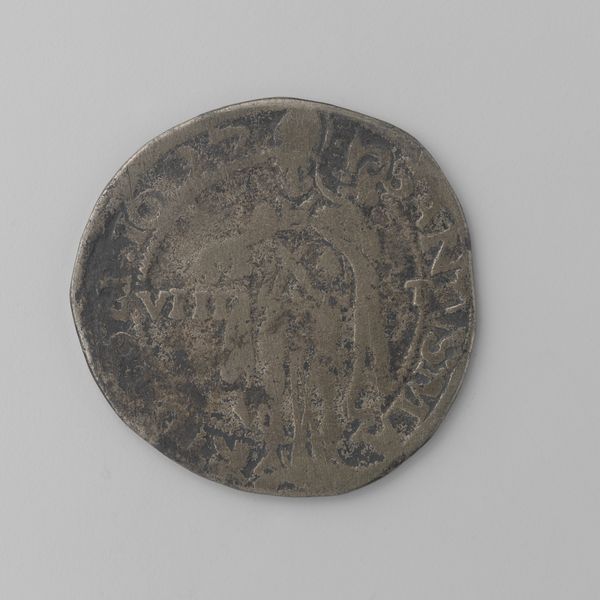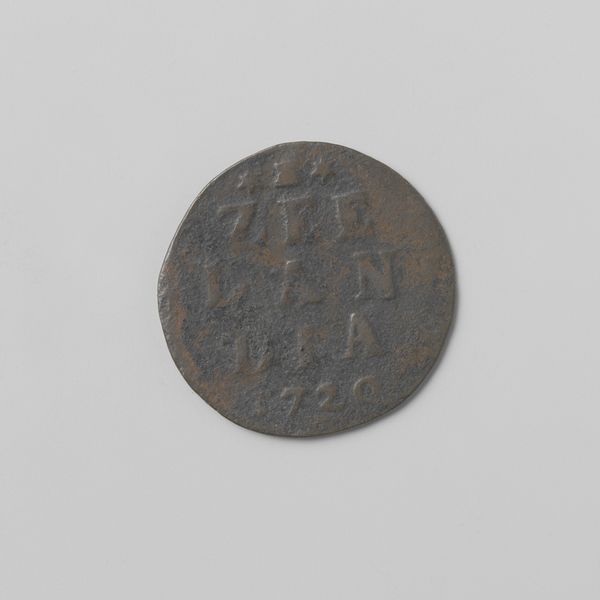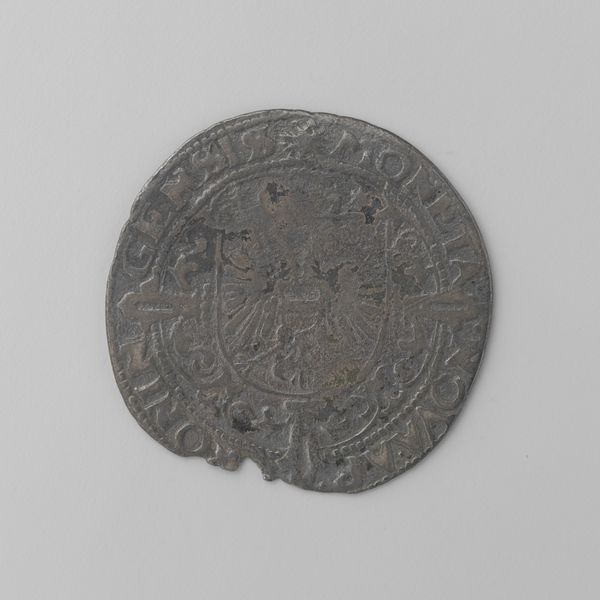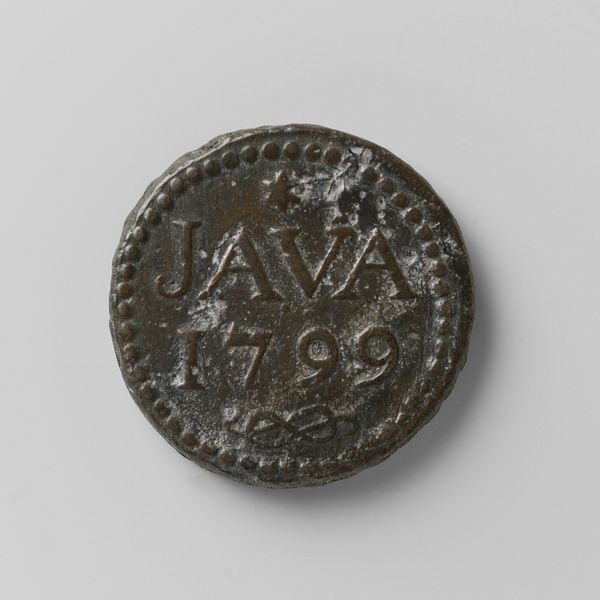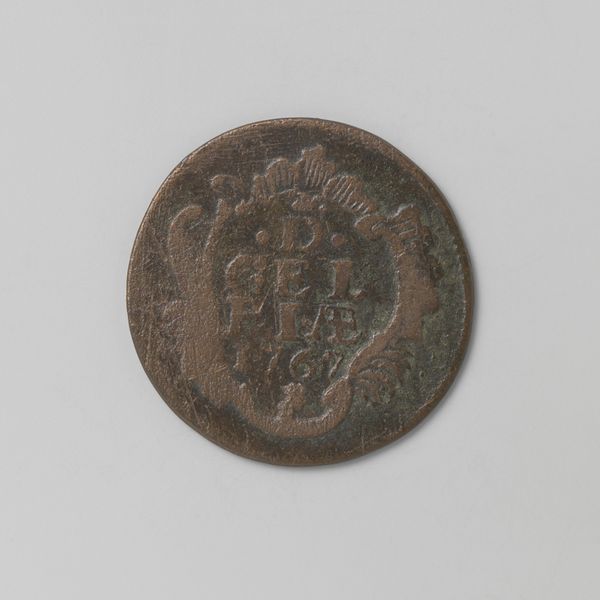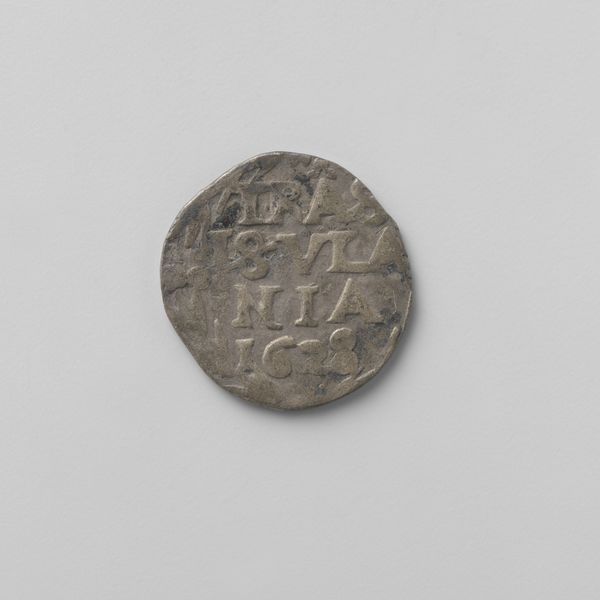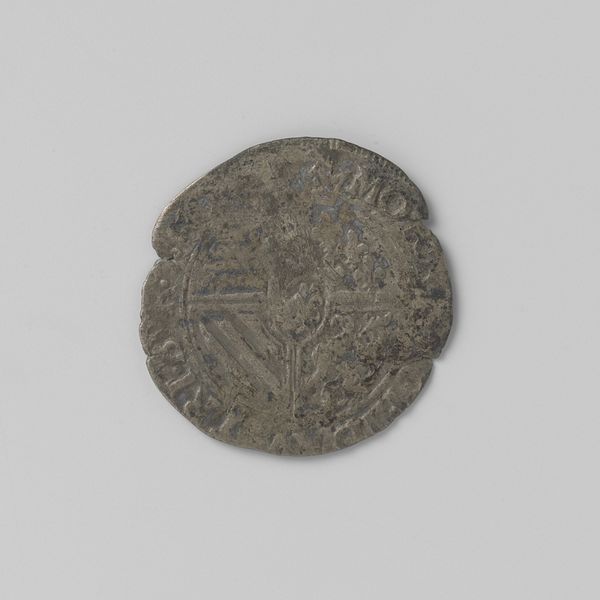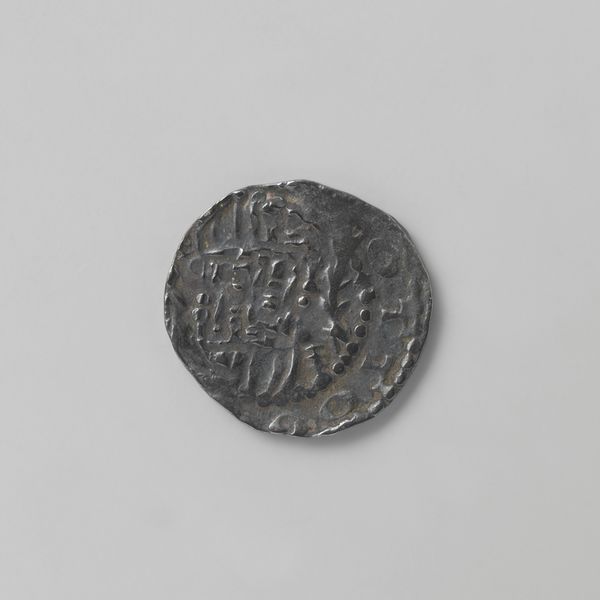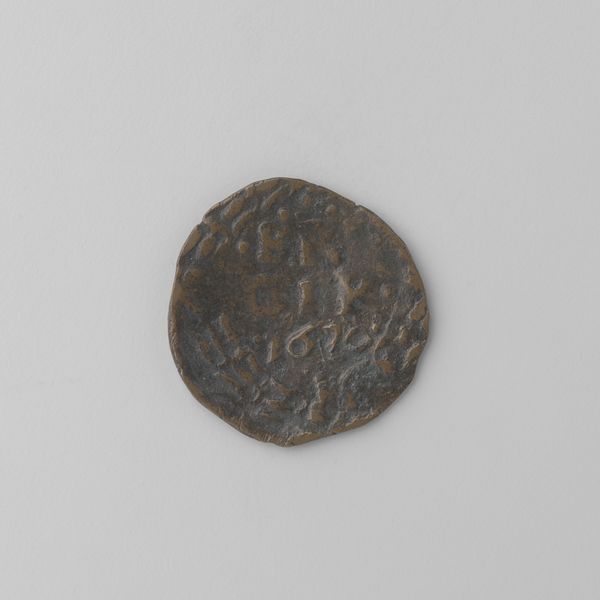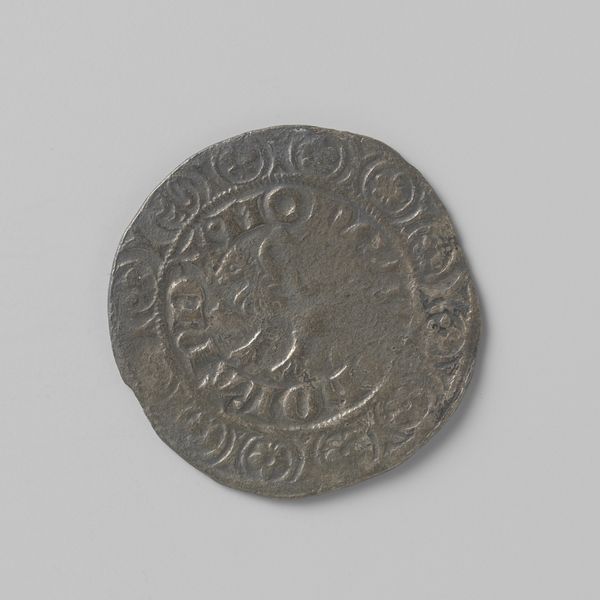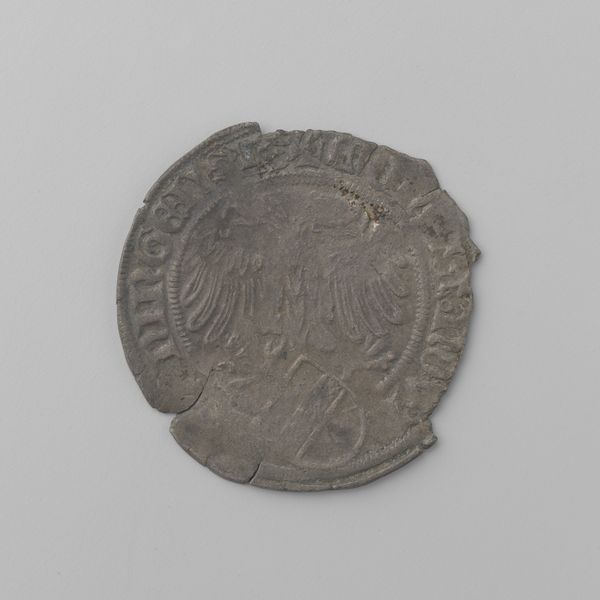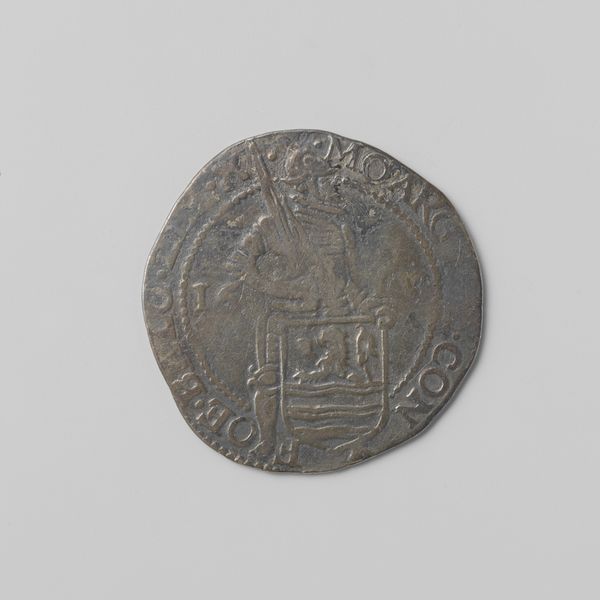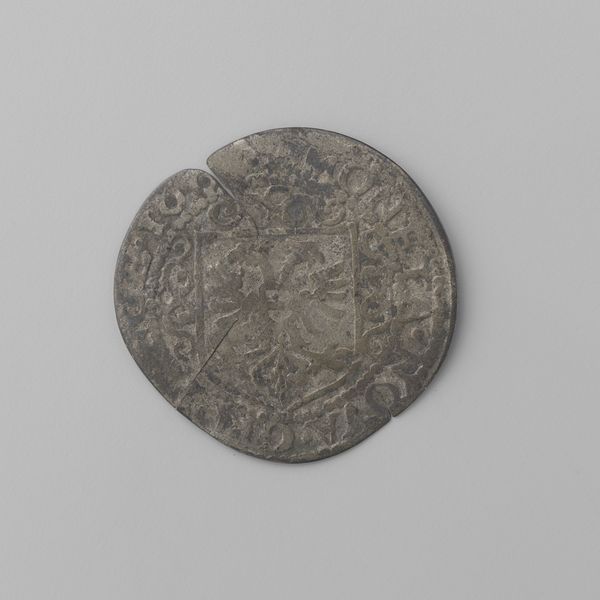
metal, relief
metal
relief
geometric
ancient-mediterranean
islamic-art
monochrome
Dimensions: diameter 2.5 cm, weight 16.60 gr
Copyright: Rijks Museum: Open Domain
This is a copper Stuiver, or emergency coin, made in Java in 1800 by the Batavian Republic. It's a small thing, just 2.5 centimeters in diameter and weighing less than 17 grams. The coin was made by die-striking: a design incised into hardened steel, which is then pressed onto a blank disc of metal to leave an impression. You can see that the coin's surface is a bit rough, and the inscription isn't perfectly crisp; this shows that the coin was likely produced quickly and in large quantities. As a “noodmunt,” this Stuiver tells a story of economic instability and the disruption of trade networks. Coins like this were often made from base metals, reflecting the scarcity of precious materials. The Batavian Republic, a short-lived state during the Napoleonic era, issued this coin in Java as a provisional measure. So, next time you see a coin, remember that it's not just a symbol of value, it's a tangible connection to the economic and political forces that shape our world.
Comments
No comments
Be the first to comment and join the conversation on the ultimate creative platform.
